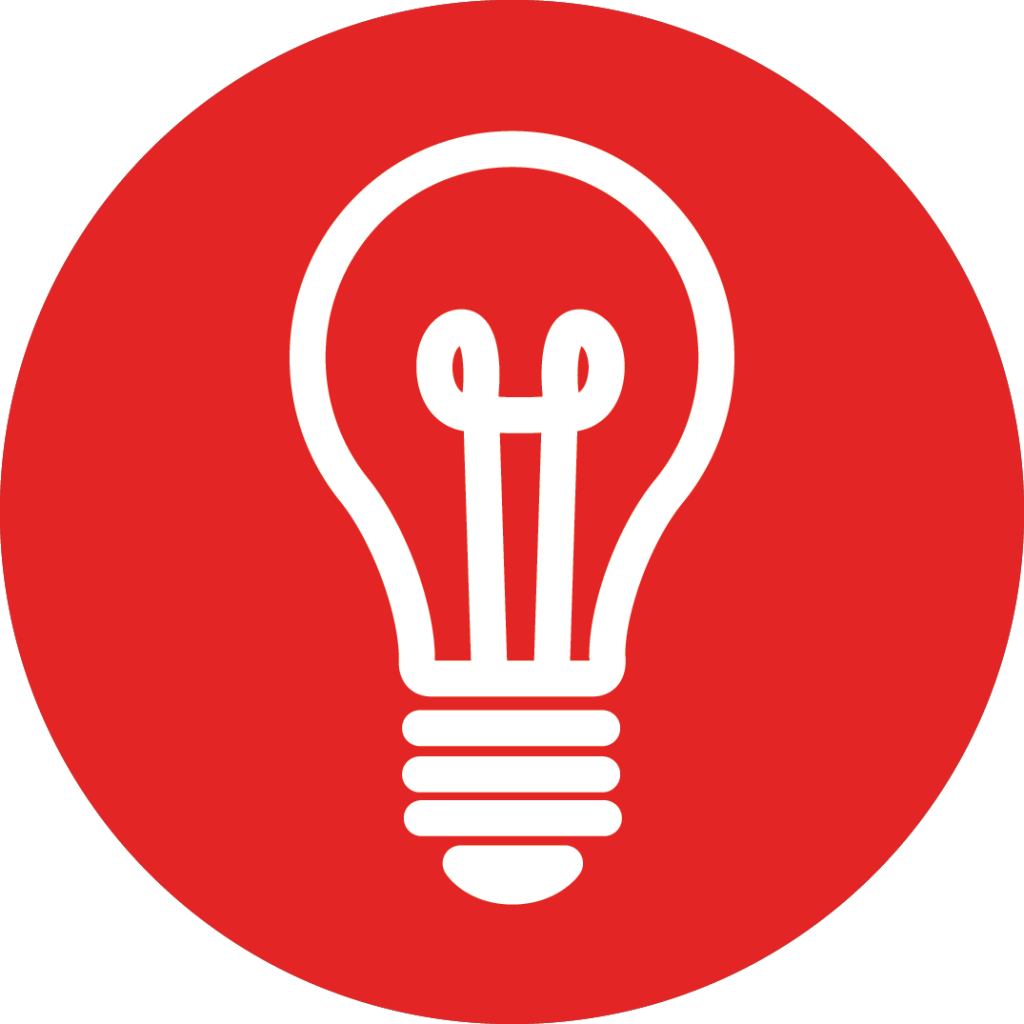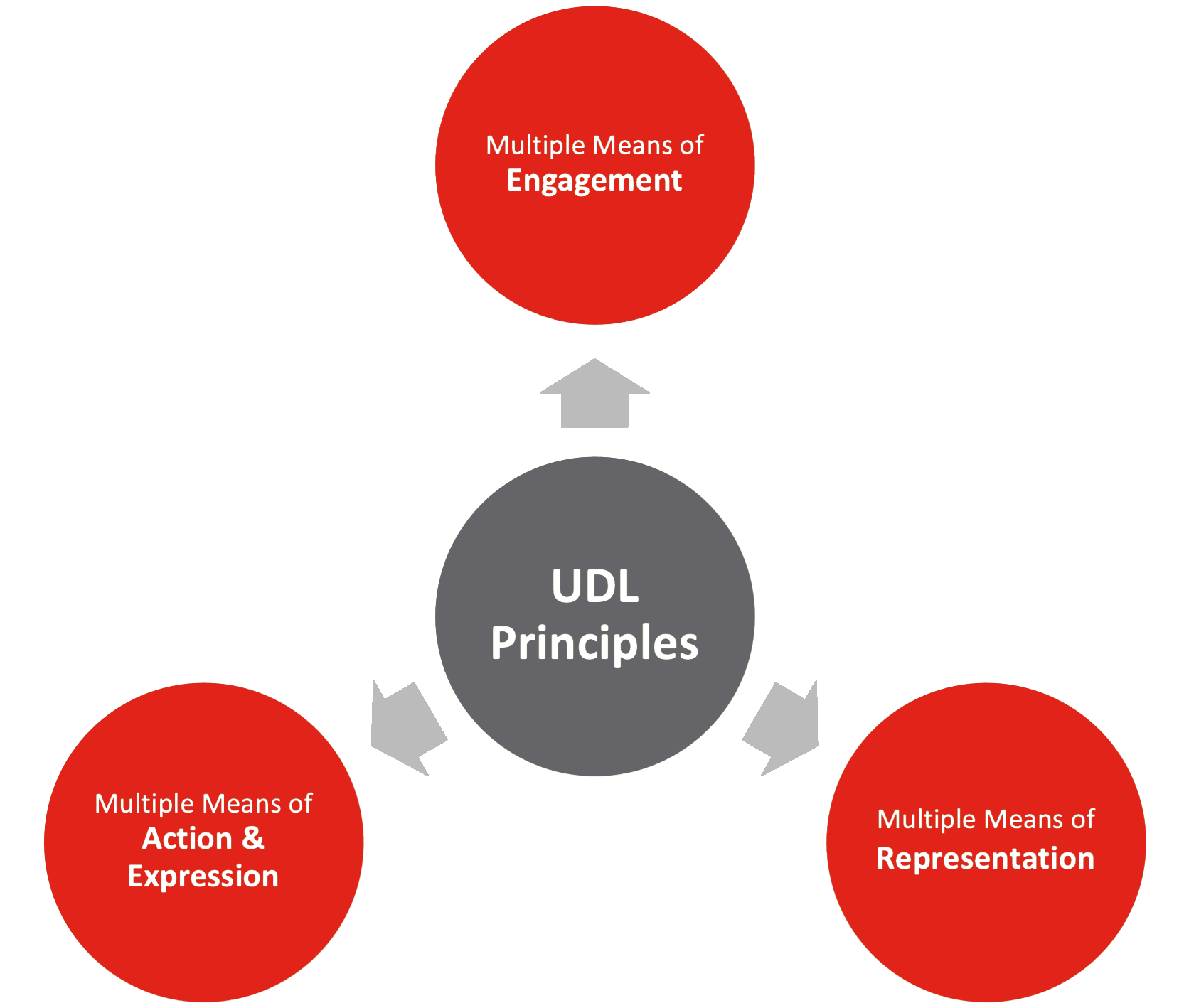1.4 UDL Principle 2: Multiple Means of Representation
Ask Yourself
![]() Continue your work on the How Do You Teach? Checklist that you started earlier. Complete the second section of the checklist to consider the ways you currently create a learning environment in which ideas and information are represented in multiple ways.
Continue your work on the How Do You Teach? Checklist that you started earlier. Complete the second section of the checklist to consider the ways you currently create a learning environment in which ideas and information are represented in multiple ways.
What does Multiple Means of Representation mean?
Multiple means of representation is about providing learners various ways to access and engage with course materials and information. In its simplest form, this could mean offering textbooks in audio or multimedia formats. This principle also refers to how students comprehend information in different forms, such as decoding syntax, vocabulary, notation, symbols, and disciplinary language. The goal is to support students in using multiple representations and developing fluency in traversing across them. Offering flexibility in presenting information also acknowledges differences in how learners comprehend and perceive information. For example, students with visual impairment may find print materials inaccessible, and students with diverse language, cultural backgrounds, and access needs may encounter barriers to information when educators assume common backgrounds. In a learning environment that applies this principle, material and content are presented in a variety of ways at the outset.
The principle also includes pedagogical approaches to a topic or concept. An educator could decide to give a concept overview (lecture) followed by an example and an application of the concept through an in-class exercise. Other examples of approaches include statistics, case studies, and expert opinion. If one approach is ineffective, a different approach may work better.

The following short video from the Southern Illinois Professional Development Center offers an overview of this UDL principle.
Video: UDL – Multiple Means of Representation [2:32]. Captions are available on YouTube.
What might “Multiple Means of Representation” look like in the classroom?
This table provides some examples for implementing multiple means of representation in a postsecondary classroom. Categories are listed on the left, with ideas for implementation on the right.
| Multiple Means of Representation | Putting it into Practice |
|---|---|
| Accessible course materials |
|
| Multimodal sources of information |
|
| Pedagogical approaches |
|
| Student-created materials |
|
| Comprehension and key concepts |
|
| Check for understanding |
|
Web Resources
![]() For more resources on how to provide multiple means of representation, see the guidelines and checkpoints from CAST at Principle: Provide multiple means of Representation.
For more resources on how to provide multiple means of representation, see the guidelines and checkpoints from CAST at Principle: Provide multiple means of Representation.
Reflection: One Small Step
![]() What UDL strategies would you like to try when designing (or redesigning) your next course?
What UDL strategies would you like to try when designing (or redesigning) your next course?
Use the following questions for considering this principle in more depth as it might apply to your course (and remember – start with just one small step!).
Questions for Considering Multiple Means of Representation:
- How can you ensure your course materials are accessible to as many students as possible?
- How might you present main course concepts in more than one format?
- Does your course offer opportunities to encourage student agency?
- What learning activities could emphasize comprehension of key concepts?
- How might you informally gauge student understanding of course concepts?
 Universal Design for Learning (UDL) can be defined as a framework that guides the design of courses and learning environments to appeal to the largest number of learners. UDL originates from Universal Design (UD), which is a set of principles that guides the design of architecture and products that can be used by the widest range of individuals possible: all ages, access needs, characteristics, and life stages (Institute for Human Centered Design, 2016). Both UD and UDL share a common objective of universal access, but in different contexts; UD focuses on the “built” environment whereas UDL is expressed in learning environments (Pisha & Coyne, 2001).
Universal Design for Learning (UDL) can be defined as a framework that guides the design of courses and learning environments to appeal to the largest number of learners. UDL originates from Universal Design (UD), which is a set of principles that guides the design of architecture and products that can be used by the widest range of individuals possible: all ages, access needs, characteristics, and life stages (Institute for Human Centered Design, 2016). Both UD and UDL share a common objective of universal access, but in different contexts; UD focuses on the “built” environment whereas UDL is expressed in learning environments (Pisha & Coyne, 2001).
Proponents of UDL recognize that overly rigid educational approaches can create fundamental obstacles to learning. UDL involves incorporation of a variety of approaches to engage learners in an inclusive curriculum that values diversity.
At its foundation, UDL prompts us to consider the complex factors of learning, including the educator’s decisions in course design, students’ motivations for learning, and the learning environment. The UDL framework emphasizes flexibility in how instructional material is presented, how students demonstrate their knowledge and skills, and how they are engaged in learning. It is informed by environmental design, but also by cognitive neuroscience, learning theory, and teaching practice. This framework is often presented via the three principles of UDL:
- Multiple means of engagement – connect with learners’ interests, supporting self-reflection of learning, fostering collaboration and varying levels of challenge (e.g., open class discussion, question and answer period, applied problem-solving, goal-setting).
- Multiple means of representation – provide learners with multiple ways to engage and comprehend information and experiences (e.g., video, audio, graphics, symbols, tactile objects).
- Multiple means of action and expression – provide learners with alternative methods of demonstrating what they comprehend and different ways of managing information (e.g., assignments, multimedia presentations, concept maps).

We will examine these three principles in greater depth in the following parts of this chapter.
Although much work needs to be done in higher education in understanding UDL, the framework holds a great deal of promise and potential. Educators who incorporate the three principles of UDL into their courses tend to hold certain beliefs about teaching and learning, such as the following:
- They acknowledge there is a diversity of students in their courses.
- They believe that all students have the same right to higher education.
- They aspire to creating equitable access to learning for all students in their courses.

The following video from the Center for Applied Special Technology (CAST) offers a quick overview of UDL.
Video: What is Universal Design for Learning (UDL)? [6.07] by John Spencer. Captions available on YouTube
Web Resources
![]()
The following are additional resources available for this topic:
- The Center for Applied Special Technology (CAST) developed nine guidelines, accompanied by 31 checkpoints, that illustrate the three UDL principles: The UDL Guidelines
- OER - Universal Design for Learning (UDL) for Inclusion, Diversity, Equity, and Accessibility (IDEA) by Darla Benton Kearney
- OER - Exploring and Applying Universal Design for Learning by University of Iowa Center for Teaching
- OER - A Comprehensive Guide to Applying Universal Design for Learning: A collection of three UDL workbooks by Dr. Seanna Takacs; Junsong Zhang; Helen Lee; Lynn Truong, and David Smulder

